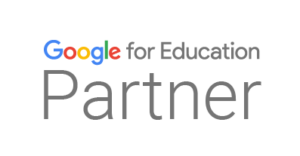In the digital age, the integration of smart education technology brings numerous benefits to classrooms, but it also raises concerns about privacy and security. As educational institutions embrace transformative tools such as Virtual Desktop Infrastructure (VDI), cloud-based infrastructure and management systems, smart Wi-Fi, Chromebooks, and secure Learning Management Systems (LMS), it becomes paramount to prioritize the protection of student data and learning environments. In this blog, we will explore essential considerations and best practices to ensure privacy and security in smart education technology implementations.
Let’s take a deeper look into what security and digital safety entail in Education Technology through this blog:
Protecting Student Data
Data Encryption: Implement robust encryption protocols to safeguard sensitive information, both during transmission and storage.
User Authentication: Utilize strong authentication mechanisms, such as multi-factor authentication, to control access to student data and learning platforms.
Data Minimization: Collect and retain only the necessary student data, adhering to data protection regulations and privacy policies.
Consent and Transparency: Obtain informed consent from students and their parents/guardians regarding data collection, usage, and sharing practices. Maintain transparency about how data is handled.
Virtual Desktop Infrastructure (VDI) for Secure Access
Centralized Control: VDI allows for centralized management, enabling administrators to control access, implement security measures, and monitor user activity.
Secure Data Storage: VDI stores data in a centralized and secure manner, reducing the risk of data loss or unauthorized access to individual devices.
Thin Client Devices: With VDI, schools can use thin client devices or repurposed hardware, minimizing the risk of data exposure or theft.
Cloud-Based Management Systems
Data Protection and Compliance: Choose reputable cloud service providers that prioritize data security, encryption, and compliance with relevant regulations.
Regular Data Backups: Maintain regular backups of data stored in the cloud to ensure data resilience and quick recovery in case of any incidents.
Secure User Access: Implement strong access controls, user authentication mechanisms, and role-based permissions to prevent unauthorized access to cloud-based management systems.
Smart Wi-Fi for Secure Connectivity
Secure Network Configuration: Implement strong passwords, encryption protocols (e.g., WPA2 or WPA3), and regular firmware updates for Wi-Fi access points and routers.
Network Segmentation: Divide the network into segments to isolate sensitive data and separate administrative systems from student devices.
Intrusion Detection and Prevention: Deploy network security solutions that monitor and detect potential threats, and proactively prevent unauthorized access or attacks.
Cloud-based infrastructure with Chromebook OS
Automatic Updates: Enable automatic updates on Chromebooks to ensure they have the latest security patches and features.
Secure Browsing: Encourage safe browsing habits and educate students about online threats, phishing attacks, and the importance of digital hygiene.
Device Management: Utilize mobile device management (MDM) solutions to enforce security policies, manage applications, and remotely track or disable devices if necessary.
Secure Learning Management Systems (LMS)
Access Control: Implement robust authentication mechanisms and access controls to ensure only authorized users can access the LMS and student data.
Secure Communication: Utilize encrypted channels for data transmission within the LMS, including messages, discussions, and file transfers.
Regular Audits and Updates: Conduct regular security audits of the LMS, apply software updates promptly, and monitor for any vulnerabilities or weaknesses.
Conclusion
As smart education technology continues to shape modern learning environments, ensuring privacy and security becomes paramount. By prioritizing data protection, leveraging technologies like VDI and cloud-based infrastructure and management systems, securing Wi-Fi networks, implementing device security measures for Chromebooks, and using secure Learning Management Systems, educational institutions can create a safe and trusted digital ecosystem for students. By adhering to best practices and staying informed about evolving security threats, we can embrace the benefits of smart education technology while safeguarding student privacy and enhancing their learning experiences.
At Netoyed for Education, we are strongly committed to creating a secure learning environment by integrating transformative technology in smart classrooms. Contact us to learn more and get a personalized solution for your school.




 1st Floor, H-31, Sector 63,
1st Floor, H-31, Sector 63,